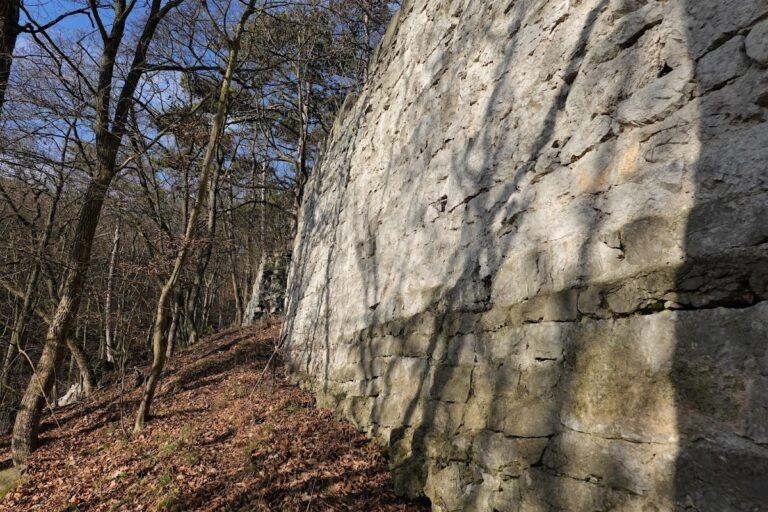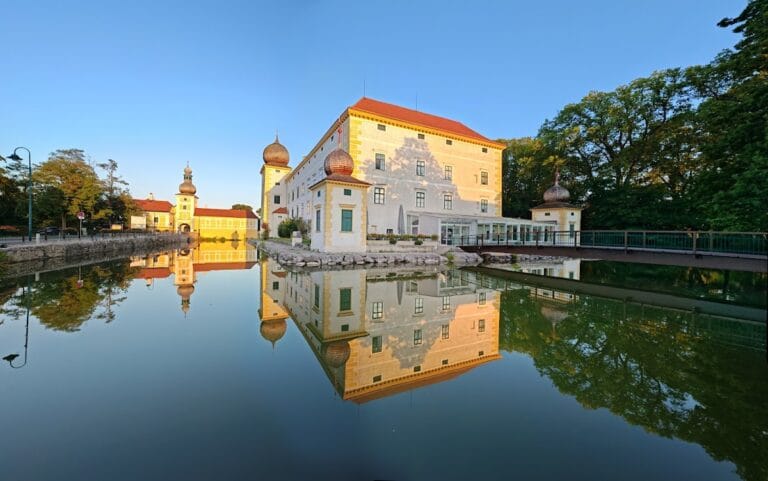Merkenstein Ruins: A Medieval Fortress Near Bad Vöslau, Austria
Visitor Information
Google Rating: 4.5
Popularity: Low
Google Maps: View on Google Maps
Official Website: www.stadtmuseumbadvoeslau.at
Country: Austria
Civilization: Medieval European
Remains: Military
History
The Merkenstein ruins are located near the municipality of Bad Vöslau in Austria. The hilltop fortress was originally constructed by medieval European nobility, with its earliest reliable mention dating back to the mid-12th century.
The castle first appears in the Codex Falkensteinensis around 1170. It was initially held by the noble Merkenstein family, who took their name from the fortress itself and maintained possession until 1322. Following this period, control passed to the Wallsee family, who owned the castle for approximately one hundred years. In 1440, financial hardship and family issues compelled the Wallsee lineage to sell Merkenstein to Stephan von Hohenberg.
Ownership under the Hohenberg family lasted until 1484. Notably, in 1482, Hans III von Hohenberg sided with Hungarian King Matthias Corvinus during a conflict opposing Emperor Friedrich III. This alliance provoked an imperial siege of Merkenstein lasting four weeks, which ultimately failed to capture the fortress. Not long after, Hans III reconciled with Emperor Friedrich III and sold the castle to him in 1484.
Two years later, in 1486, Matthias Corvinus succeeded in taking possession of Merkenstein again. Upon his death, the castle returned to imperial control. From 1603 until 1672, the Heißperger family managed the estate before it passed into the hands of the Dietrichstein family.
Merkenstein suffered a devastating blow during the Ottoman wars in August 1683. Turkish forces besieged, overtook, and set fire to the castle, an assault that claimed 173 lives. This event marked the end of the fortress’s active use, leaving it in ruins thereafter.
In the 16th century, the lordship associated with Merkenstein included the settlements of Gainfarn, Großau, Pottenstein, as well as administrative areas such as Furth, Muggendorf, and St. Veit. The estate, incorporating the nearby younger Schloss Merkenstein, made up roughly 40% of the Großau municipality.
Ownership remained with the German Krupp family until the conclusion of World War II. Following the war, as German property, the site came under the administration of the Soviet-controlled USIA. Eventually, control passed to the Austrian Republic, which entrusted management to the Federal Forests. Since 1978, the ruins have been privately owned and have undergone careful restoration efforts.
Cultural connections to the site include two musical compositions by Ludwig van Beethoven dedicated to the Merkenstein ruins, underscoring its place in artistic heritage.
Remains
The remains of Merkenstein castle present mainly as substantial outer walls built from rubble stone, reflecting medieval construction methods. These walls have endured relatively well over the centuries despite the castle’s destruction. Their thickness, reaching up to six meters, compensates for the absence of additional defensive walls known as ring walls, highlighting their role in fortification.
Positioned atop elevated terrain near Bad Vöslau, the castle exemplified a hilltop fortress, or Höhenburg, which relied on its location for defense. The surviving walls define the general footprint of the medieval stronghold, tracing the boundary between historic courtyard spaces and the surrounding landscape.
Below and to the east of the ruins lies the Merkenstein Cave, extending 72 meters in length with a vertical range of 15 meters. This natural cavity formed in Baden dolomite breccia—a type of broken rock—developed roughly alongside the region’s Leithakalk limestone formations.
Historically, from the early Middle Ages up to 1683, the cave served as a refuse disposal site for the castle’s occupants. It was connected to the castle kitchen by a vertical shaft, allowing waste to be dropped directly into the cave below. The interior of the cave contains a protective wall dating to 1529, signifying its use as a refuge during the Turkish sieges of 1529 and 1683.
Archaeological investigations within the cave have uncovered important finds that span several eras. These include artifacts and remains from the Copper Age associated with the Badener culture, materials from the Hallstatt period of early Iron Age Europe, Roman-era objects, and evidence relating to the last Ice Age. Animal remains and traces of prehistoric human activity attest to the cave’s long-standing connection to human occupation and natural history.
In the early 20th century, approximately 6.5 tons of phosphate-rich earth were extracted from the cave to be used as fertilizer, illustrating one chapter of the site’s more recent utilization.
The cave, now designated a natural monument since 1942, is accessible only through guided exploration, ensuring protection of its natural and archaeological significance.
Together, the castle ruins and the adjoining cave provide a window into centuries of strategic, domestic, and natural history, reflecting the evolving use of this landmark over time.










